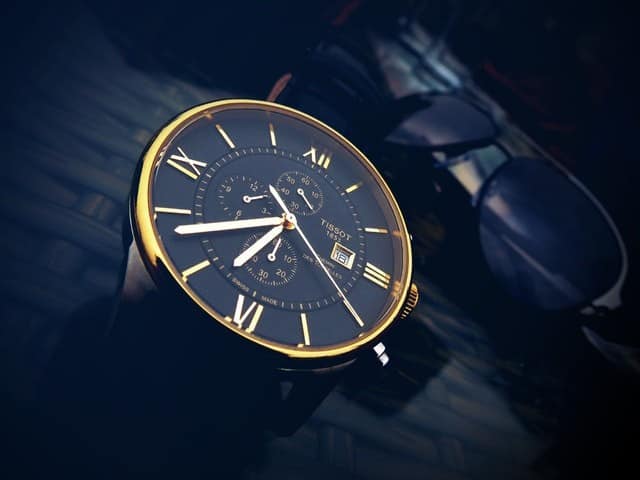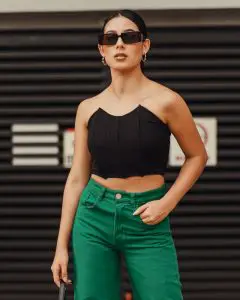Introduction
Trickle Down theory is a very important framework in the fashion industry, as it’s a concept that easily explains how trends are developed and adopted by customers.
In simple words, Trickle Down Theory suggests that styles that are adopted by higher social strata will, in time, create trends that will be followed by lower social strata as well. In this sense, brands that cater to high society will influence the behavior of all fashion markets and segments.
But that’s not it. Trickle Down Theory can also profoundly impact the way in which fashion firms manage their brands and develop their collections. Through this theory, we can easily see how a luxury brand can avoid becoming too niche-oriented.
If firms were not to account for Trickle-Down Theory, luxury brands would spend a lot of money and effort into building brands that could only be monetized on a very restricted audience of high net worth individuals.
This is not the case, as the equity and values associated with a luxury brand can be monetized against a wide variety of customers, by leveraging a variety of business models. In this post, we’re going to delve into more detail on this matter to show how a luxury brand positioning can be a very successful one, by understanding how fashion companies can monetize a prestige positioning strategy in many different ways.
To help you navigate our post we’ve broken it up into different topics.
- Where the Trickle-Down Effect Starts: The Haute Couture and Pret-A-Porter Segment
- Trickle Down to Diffusion Lines
- Trickle Down to the Mass Market: Masstige Products
- Trickle Down to the Second Hand Market
- Conclusions
1. Where the Trickle-Down Effect Starts: The Haute Couture and Pret-A-Porter Segment
Let’s start with the luxury tiers of fashion, haute couture, and pret-a-porter. As discussed in the introduction, brands which take up this market space will be able to influence lower-tier segments, as luxury fashion products are connected to a variety of aspirational values which serve mostly social jobs and emotional jobs, rather than functional jobs.
It’s worth noting that fashion is not the only industry that takes advantage of this dynamic, as in the automotive segment and Grand Prix racing we can see a very similar approach, whereby F1 sports cars can influence the behavior of customers purchasing premium cars.
In terms of business models, the challenge that these collections face is their time-to-market (TTM) or the time necessary for the manufacturers (or better craftsmen) to produce the collection, which usually gets to the retail stores not sooner than 6 months after fashion shows. This gap in timing gives fast-fashion retailers an opportunity to emulate the styles and designs and provide cheaper versions of high-fashion collections only days or weeks after the shows have taken place.
It is true, however, that these collections are more for show than anything else, as they are comparable to a PR-Communication strategy rather than an actual market-oriented offering. In order to meet customer’s demands, luxury fashion brands broaden their market by developing white labels, the ones customers can more easily accessible in the diffusion lines. That’s what we are going to talk about next.
2. Trickle Down to Diffusion Lines
Diffusion lines are the first line of expansion for a luxury brand. They allow firms to access a much more broad audience of customers by bringing down the price of their collection to a point that is approachable for the average customer.
What allows first to lower prices is the steep reduction in unit production costs which start to benefit from economies of scale, connected to a more impactful contribution of industrial manufacturing processes. As a result, customers get to buy a collection that has the same stylistic identity DNA of more prestigious brands, but at a more affordable price. In this case, despite the lower manufacturing quality, the values, brand equity, and associations of the higher-end band clearly trickle down to the diffusion line.
3. Trickle Down to the Bridge Mass Market: Masstige Products
What about customers who are in much lower customer segments, like the bridge brands and mass-market brands, how do luxury designers reach them? Through masstige products. We discuss these product categories in more depth in this article. Masstige products are commodities from specific categories such as eyewear, fragrances, and cosmetics that are sold at premium pricing because of the imprint of a luxury brand. These products further take advantage of the cost efficiencies and profit margins we’ve already discussed in the diffusion lines, but with even greater financial benefits.
It’s important to notice that in the development of these brand extension strategies, the management of your brand’s equity is essential and this is why these manufacturing relationships are usually managed through licensing agreements that protect the licensor’s most important asset: its stored equity. If you’re interested in reading up more about licensing, here’s an article that may assist you.
We may also notice that the mass market is no longer the lowest tier in the market, and that’s why in the next section we’ll start looking into how the trickle-down approach applies to the secondhand market.
4. Trickle Down to the Second Hand Market
With the advent of second-hand marketplaces, a lot of new potential customers have accessed luxury markets by buying products on new circular economy platforms. At a first glance, this may look as if luxury brands could be damaged by this new trend. Surely, companies need to manage the supply and availability of their products, as a high supply of luxury will in time impact the perceived scarcity and exclusivity of the brand.
At the same time, however, brands will be able to take advantage of the fact that luxury items are more timeless as they don’t resent from fashion trends as much as other lower-tier brands, and can use this opportunity to build loyalty soon, knowing that many customers could buy their first luxury product second hand.
There we go. Now that we’ve discussed a variety of ways in which trickle-down theory applies not only to fashion trends but also to the fashion business, it’s time to draw some conclusive remarks.
5. Conclusions
There you have it! As we’ve discussed in this post, Trickle Down Theory is one of the most relevant and influential branding strategies that luxury brands can follow. At each ‘ladder’ of the fashion pyramid, we can identify an approach that allows us to take full advantage of our brand’s values and aspirational associations. Let’s summarise:
- Diffusion level. Here a brand can access a broader consumer market by developing a white label, that is still inspired by the design and looks of the black label brand, but is produced (at least in part) through industrial processes. As a result of this, the brand will sell products at a lower unit cost but with a high-profit margin.
- Bridge and Mass Market. At this level, a brand can utilize licensing agreements to license out its brand to third-party manufacturing companies that can produce different types of mass-prestige items in categories such as beauty, fragrance and eyewear. Again, the high-value brand will provide a high margin to an otherwise commodity-level product.
- Second-hand markets. Because of the fact that high-level brands are considered timeless, iconic pieces, luxury companies can take advantage of the prolonged lifespan of their products to interact with new customers who may buy a second-hand product as a gateway to start a more loyal relationship with the brand. This allows these firms to acquire new customers in segments that would otherwise account for a high acquisition cost.
All in all these strategies are very effective. It’s important however to remember that luxury brands need to make sure they are not diluting their brand equity too much, as this would impair their ability to maintain their luxury positioning. As a result, luxury firms have the opportunity to leverage great influence on the fashion industry, but care is advised to avoid impact the value of your brand.








